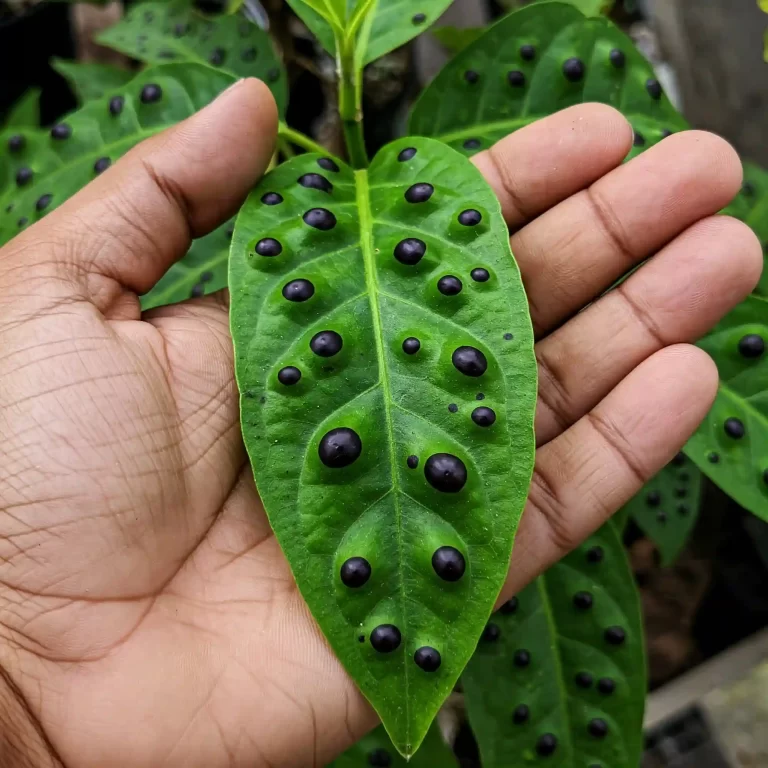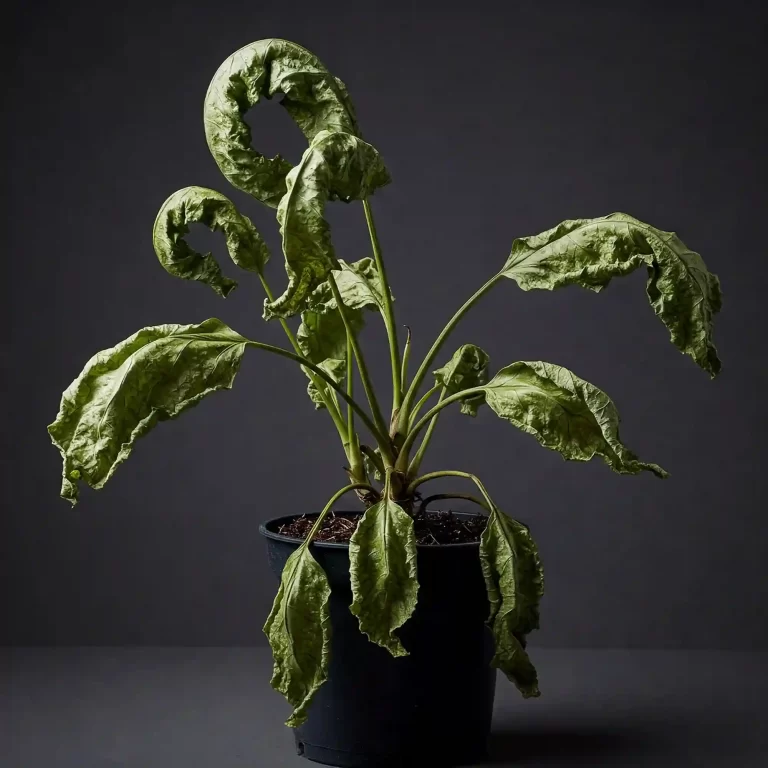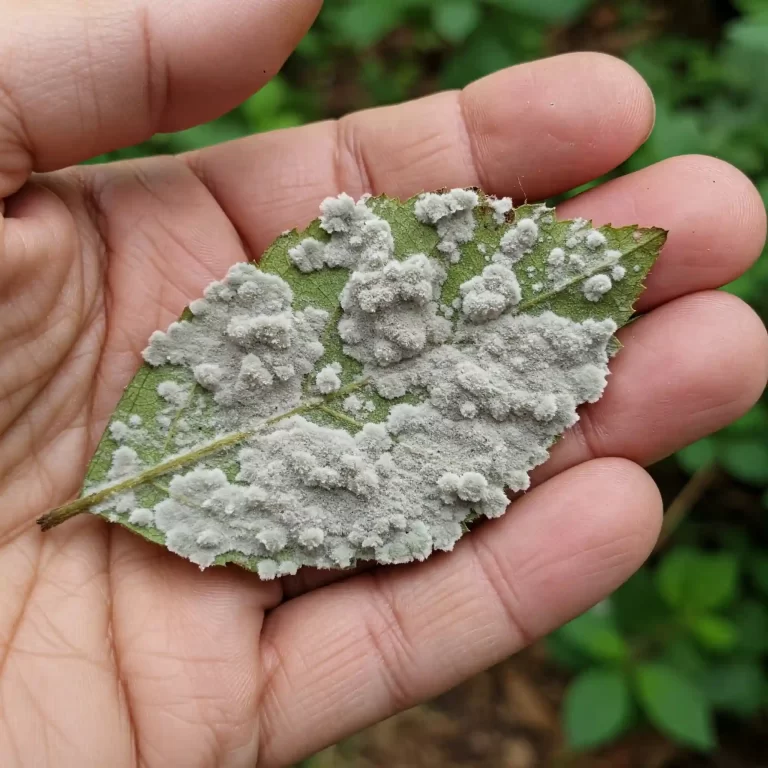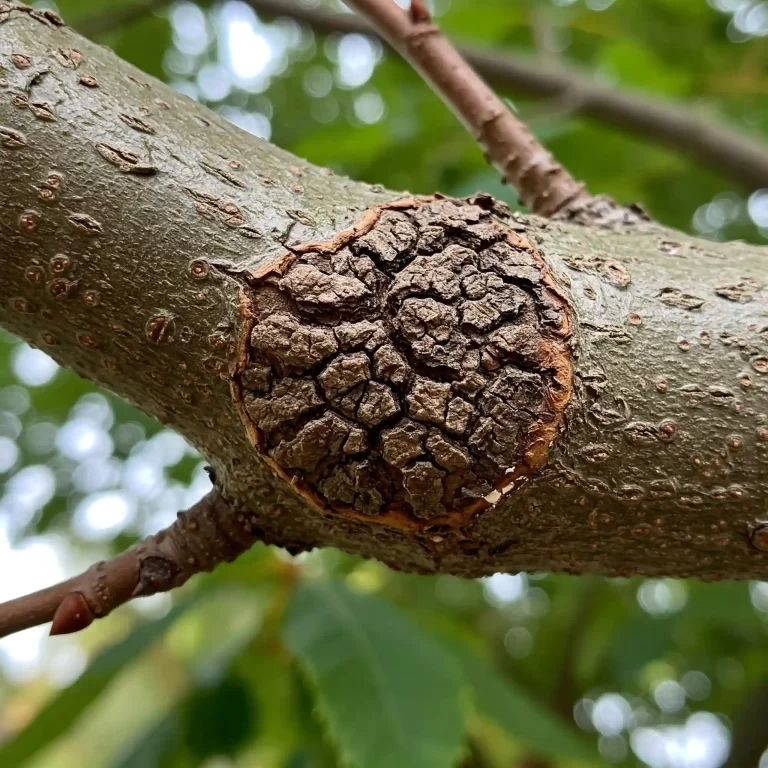| – The White Butterfly Syngonium is a beautiful houseplant with variegated arrowhead-shaped leaves that can purify the air and add a touch of nature to your home. |
| – The plant prefers bright but indirect light, a well-draining potting mix that is rich in organic matter, and regular watering when the top inch of the soil feels dry. |
| – The plant benefits from regular feeding with a balanced liquid fertilizer diluted to half-strength every two weeks from spring to summer. |
| – The plant can be pruned and groomed to maintain its shape and size, and propagated by stem cuttings or division. |
| – The plant can be affected by common pests and diseases, such as mealybugs, spider mites, root rot, and leaf spot, which can be prevented and treated by inspecting the plant regularly, removing the infected parts, and using natural or chemical remedies. |
Are you looking for a houseplant that can brighten up your space, purify the air, and add a touch of nature to your home? If so, you might want to consider the White Butterfly Syngonium, a popular and easy-to-care-for plant with variegated arrowhead-shaped leaves.
The White Butterfly Syngonium, also known as the Arrowhead Vine, the Nephthytis, or the Goosefoot Plant, is a tropical plant that belongs to the Araceae family. It is native to Brazil, Bolivia, Ecuador, and Mexico, where it grows as a vine or a creeper in the rainforest. The plant has creamy white and green leaves that resemble the wings of a butterfly, hence its common name.
The White Butterfly Syngonium is a versatile plant that can be grown in various indoor conditions, such as in hanging baskets, pots, or terrariums. It can also be trained to climb on a trellis, a moss pole, or a wall. The plant is known for its air-purifying properties, as it can remove toxins such as formaldehyde, benzene, and xylene from the air.
In this article, we will show you how to grow and care for the White Butterfly Syngonium, covering topics such as:
- Light and temperature requirements
- Soil and watering requirements
- Fertilizer and feeding schedule
- Pruning and grooming methods
- Propagation techniques
- Pests and diseases prevention and treatment
By following these tips, you will be able to enjoy the beauty and benefits of this plant for years to come. Let’s get started!
White Butterfly Syngonium Light and Temperature Requirements
One of the most important factors to consider when growing and caring for the White Butterfly Syngonium is the light. The plant prefers bright but indirect light, as direct sunlight can scorch the leaves and cause them to lose their variegation. You can place the plant near a window with a sheer curtain or in a spot that receives filtered light, such as under a skylight, a canopy, or a pergola.
To adjust the light exposure for the plant, you can try these tips:
- Rotate the pot every few weeks to ensure even growth and prevent the plant from leaning towards the light source.
- Move the plant closer or farther from the window depending on the season and the intensity of the light. In summer, you may need to move the plant away from the window to avoid excessive heat and sunburn. In winter, you may need to move the plant closer to the window to provide more light and warmth.
- Use artificial lights, such as fluorescent or LED bulbs, to supplement the natural light if the plant is in a low-light area. You can use a timer to provide the plant with 12 to 14 hours of light per day.
Another factor to consider is the temperature. The White Butterfly Syngonium is a tropical plant that thrives in warm and humid conditions. The optimal temperature range for the plant is 18 to 27°C (65 to 80°F). You should avoid exposing the plant to extreme heat or cold, as this can stress the plant and cause leaf drop, wilting, or yellowing.
To maintain the temperature for the plant, you can try these tips:
- Avoid placing the plant near drafts, such as air conditioners, heaters, fans, or open windows, as this can cause sudden temperature changes and damage the plant.
- Use a humidifier or a pebble tray to increase the humidity around the plant, especially in dry or cold seasons. You can also mist the plant occasionally with a spray bottle to keep the leaves moist and fresh.
- Cover the plant with a cloth or a newspaper if the temperature drops below 10°C (50°F) at night or during frost. You can also move the plant indoors or to a warmer spot if possible.
White Butterfly Syngonium Soil and Watering Requirements
Another important factor to consider when growing and caring for the White Butterfly Syngonium is the soil. The plant needs a well-draining potting mix that is rich in organic matter, as this can provide the plant with the nutrients and moisture it needs. You can use a mix of peat, perlite, and vermicompost, or buy a ready-made potting mix for houseplants. Make sure the pot has drainage holes to prevent waterlogging and root rot.
To prepare and improve the soil for the plant, you can try these tips:
- Add some compost, worm castings, or fertilizer to the soil to enrich it with organic matter and nutrients. You can also use a slow-release fertilizer that can feed the plant for several months.
- Loosen the soil before planting or repotting the plant to improve the aeration and drainage. You can also add some sand, gravel, or bark chips to the soil to increase the porosity and drainage.
- Check the drainage of the soil and the pot by watering the plant and observing how fast the water drains out. If the water drains too slowly or stays in the pot, you may need to repot the plant in a larger pot with a better-draining soil.
Another factor to consider is the watering. The White Butterfly Syngonium likes to be kept moist but not soggy, as overwatering or underwatering can cause root rot, leaf drop, or wilting. The best way to water the plant is to check the soil moisture with your finger or a meter and water the plant when the top inch of the soil feels dry to the touch. You should also use room-temperature water to avoid shocking the plant.
To water the plant properly, you can try these tips:
- Use a watering can, a spray bottle, or a drip system to water the plant evenly and thoroughly. Avoid using a hose or a faucet, as this can cause water pressure and damage the plant.
- Avoid watering the plant from above, as this can cause water to accumulate on the leaves and stems and lead to fungal or bacterial infections. Instead, water the plant from below, such as by placing the pot in a tray of water and letting the plant absorb the water through the drainage holes.
- Avoid watering the plant too frequently or too sparingly, as this can cause the soil to become too wet or too dry and affect the plant’s health. You can use a calendar or a reminder to keep track of your watering schedule and adjust it according to the season and the weather.
White Butterfly Syngonium Fertilizer and Feeding Schedule
Another important factor to consider when growing and caring for the White Butterfly Syngonium is the fertilizer. The plant benefits from regular feeding during the growing season, as this can boost the plant’s growth and health. You can use a balanced liquid fertilizer diluted to half-strength and apply it every two weeks from spring to summer. You can use organic or synthetic sources of fertilizer, but avoid using fertilizers that contain too much salt, as this can cause salt buildup and burn the plant.
To choose and apply the fertilizer for the plant, you can try these tips:
- Read the label and follow the instructions of the fertilizer you are using. Different fertilizers have different concentrations, ratios, and application methods, so you should follow the guidelines accordingly.
- Test the soil pH before applying the fertilizer, as this can affect the availability and absorption of the nutrients. The optimal pH range for the White Butterfly Syngonium is 5.5 to 6.5. You can use a pH meter or a pH test kit to measure the soil pH and adjust it with lime or sulfur if needed.
- Apply the fertilizer before or after watering the plant, as this can help the plant absorb the nutrients better and prevent the fertilizer from burning the roots. You can also water the plant lightly after fertilizing to wash off any excess fertilizer from the leaves or stems.
To feed the plant safely and effectively, you can try these tips:
- Water the plant before fertilizing, as this can prevent the plant from being dehydrated and stressed by the fertilizer. You should also avoid fertilizing the plant when the soil is too dry or too wet, as this can cause root damage or nutrient leaching.
- Avoid contact with the leaves or stems when applying the fertilizer, as this can cause leaf burn or stem rot. Instead, apply the fertilizer around the base of the plant or near the roots.
- Flush the soil occasionally with water to remove any salt buildup or fertilizer residue that may accumulate in the soil. You can do this by running water through the soil until it drains out of the pot.
White Butterfly Syngonium Pruning and Grooming Methods
Another important factor to consider when growing and caring for the White Butterfly Syngonium is the pruning and grooming. The plant can grow long and leggy over time, which can affect its appearance and health. You can prune and groom the plant to maintain its shape and size, encourage bushier growth, remove dead or damaged parts, and prevent pests and diseases. You can also use the cuttings to propagate new plants.
To prune and groom the plant correctly, you can try these tips:
- Use sharp and clean scissors or shears to cut the plant, as this can prevent tearing or infection. You can also sterilize the tools with alcohol or bleach before and after using them.
- Cut the plant at an angle, as this can help the plant heal faster and prevent water from accumulating on the cut surface. You can also apply a wound sealant, such as cinnamon or honey, to the cut area to protect it from infection.
- Dispose of the cuttings properly, as they can attract pests or diseases. You can also compost them or use them to propagate new plants.
To prune and groom the plant effectively, you can try these tips:
- Prune and groom the plant when it is actively growing, such as in spring or summer, as this can help the plant recover faster and produce new growth. You should avoid pruning the plant in winter, as this can stress the plant and affect its dormancy.
- Prune and groom the plant as needed, depending on the size and shape you want to achieve. You can prune the plant lightly or heavily, depending on your preference. You can also pinch off the growing tips to encourage bushier growth.
- Care for the plant after pruning and grooming, such as by watering the plant, applying a wound sealant, and monitoring the plant’s health. You should also check the plant for any signs of pests or diseases, such as discoloration, spots, or holes, and treat them accordingly.
White Butterfly Syngonium Propagation Techniques
Another important factor to consider when growing and caring for the White Butterfly Syngonium is the propagation. The plant can be easily propagated by stem cuttings or division, which can help you create new plants or share them with your friends and family. You can also use the cuttings from pruning and grooming to propagate the plant.
To propagate the plant by stem cuttings, you can try these tips:
- Choose a healthy and mature stem with at least two or three nodes, which are the bumps where the leaves and roots grow. You can also choose a stem with aerial roots, which are the roots that grow along the stem.
- Remove the lower leaves from the stem, leaving only one or two leaves at the top. You can also cut the stem into smaller sections, each with one or two nodes.
- Place the cutting in water or moist soil, depending on your preference. If you use water, you can use a glass jar or a bottle and change the water every few days. If you use soil, you can use a small pot or a tray and cover it with a plastic bag or a dome to create a humid environment.
- Wait for roots to develop, which can take from a few days to a few weeks, depending on the conditions. You can also use a rooting hormone, such as honey or aloe vera, to speed up the process.
- Transplant the cutting to a larger pot with a well-draining potting mix when the roots are about an inch long. You can also acclimate the cutting to the new environment by gradually exposing it to more light and air.
To propagate the plant by division, you can try these tips:
- Gently separate the plant into smaller sections, each with roots and leaves. You can do this by removing the plant from the pot and using your fingers or a knife to divide the root ball. You can also use a fork or a spade to lift and divide the plant if it is in the ground.
- Plant the sections in separate pots or in the ground with a well-draining potting mix. You can also use the same pot as the original plant if it is large enough.
- Water the sections well and place them in a bright but indirect light spot. You can also cover them with a plastic bag or a dome to create a humid environment.
- Care for the sections as you would for the original plant, such as by providing adequate light, water, soil, and fertilizer. You should also check the sections for any signs of pests or diseases, such as wilting, yellowing, or drooping, and treat them accordingly.
To propagate the plant effectively, you can try these tips:
- Propagate the plant when it is actively growing, such as in spring or summer, as this can help the plant produce new growth and roots faster. You should avoid propagating the plant in winter, as this can stress the plant and affect its dormancy.
- Propagate the plant from healthy and mature plants, as this can increase the chances of success and reduce the risk of infection. You should also avoid propagating the plant from diseased or damaged plants, as this can spread the problem to the new plants.
- Care for the new plants as you would for the original plant, such as by providing adequate light, water, soil, and fertilizer. You should also monitor the new plants’ health and growth and repot them when necessary.
White Butterfly Syngonium Pests and Diseases Prevention and Treatment
Another important factor to consider when growing and caring for the White Butterfly Syngonium is the pests and diseases. The plant can be affected by common pests and diseases that affect many houseplants, such as mealybugs, spider mites, aphids, scale insects, root rot, leaf spot, and bacterial wilt. These pests and diseases can cause various symptoms and problems, such as discoloration, spots, holes, curling, wilting, or dropping of the leaves.
To prevent and treat the pests and diseases, you can try these tips:
- Inspect the plant regularly, especially the undersides of the leaves and the stems, for any signs of pests or diseases, such as webbing, sticky residue, or cottony masses. You can also use a magnifying glass or a flashlight to see better.
- Remove the infected parts of the plant, such as by pruning or pinching off the affected leaves or stems. You can also isolate the plant from other plants to prevent the spread of the problem.
- Use natural or chemical remedies to get rid of the pests or diseases, depending on the severity and type of the problem. You can use natural remedies, such as neem oil, soap spray, rubbing alcohol, or vinegar, to kill or repel the pests or diseases. You can also use chemical remedies, such as insecticidal soap, horticultural oil, or fungicide, to treat the pests or diseases. You should always follow the instructions and precautions of the remedies you are using and apply them in a well-ventilated area.
To prevent and treat the pests and diseases effectively, you can try these tips:
- Prevent the pests and diseases by providing the right light, water, soil, and fertilizer for the plant, as this can keep the plant healthy and strong. You should also avoid overwatering or underwatering, overfertilizing or underfertilizing, and overcrowding or neglecting the plant, as this can stress the plant and make it more susceptible to pests and diseases.
- Treat the pests and diseases as soon as possible, as this can prevent the problem from getting worse and affecting the whole plant. You should also repeat the treatment as needed, depending on the type and severity of the problem. You can also use a combination of natural and chemical remedies to increase the effectiveness of the treatment.
- Care for the plant after treating the pests and diseases, such as by watering the plant, applying a wound sealant, and monitoring the plant’s health. You should also check the plant for any recurrence or new signs of pests or diseases and treat them accordingly.
Conclusion
The White Butterfly Syngonium is a beautiful houseplant that can brighten up your space, purify the air, and add a touch of nature to your home. By following these tips on how to grow and care for the White Butterfly Syngonium, you will be able to enjoy the beauty and benefits of this plant for years to come.
We hope you found this article helpful and informative. If you have any questions or feedback, please feel free to leave a comment below or contact us through our website. We would love to hear from you and see your White Butterfly Syngonium plants.
Thank you for reading and happy gardening!



